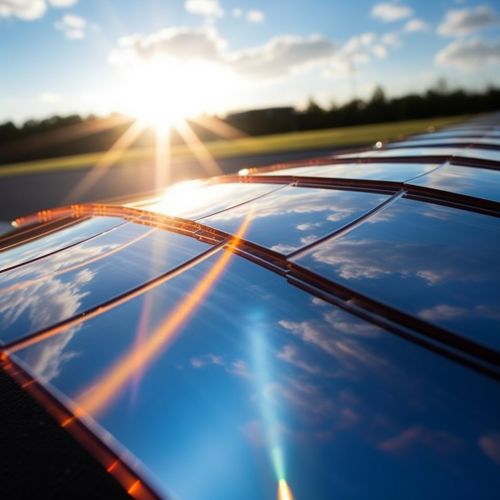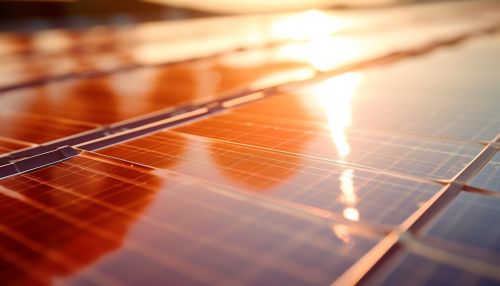Polymer Solar Cell
Introduction
Polymer solar cells (PSCs) are a type of flexible photovoltaic (PV) cells that use polymers, a type of large, flexible molecule, as the light-absorbing material. These polymers can be solution-processed, which allows for the potential of low-cost, large-scale production of solar cells. PSCs are a subfield of organic solar cells (OSCs), which also include small-molecule organic solar cells.
History
The first polymer solar cell was reported in 1986 by Tang. However, the efficiency of these early devices was very low, and it was not until the 1990s that significant progress was made. In 1995, Yu, Heeger, and Gao reported a PSC with an efficiency of 2.5%, a significant improvement over previous devices. Since then, the efficiency of PSCs has steadily increased, with the current record efficiency being over 17%.
Structure and Operation
Polymer solar cells typically consist of a blend of a polymer donor and a fullerene acceptor, sandwiched between two electrodes. The polymer absorbs light, creating excitons, which are pairs of electrons and holes. These excitons are then separated at the interface between the polymer and the fullerene, creating free charges that can be collected at the electrodes.
Advantages and Challenges
PSCs have several advantages over traditional silicon-based solar cells. They are lightweight, flexible, and can be made semi-transparent, which opens up possibilities for integration into windows or other building materials. They can also be produced using solution-processing techniques, which could potentially lower the cost of solar cell production.
However, PSCs also face several challenges. The efficiency of PSCs is still lower than that of silicon-based solar cells, although it has been steadily improving. The stability of PSCs is also a concern, as they tend to degrade more quickly than silicon-based cells. Finally, the use of fullerenes as acceptors is problematic, as they are expensive and difficult to synthesize.
Future Directions
Research in the field of PSCs is focused on addressing these challenges. New materials are being developed to replace fullerenes as acceptors, and efforts are being made to improve the stability and efficiency of PSCs. In addition, new device architectures are being explored, such as tandem cells, which could potentially increase the efficiency of PSCs beyond that of silicon-based cells.
See Also


